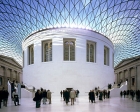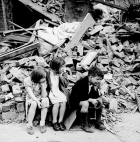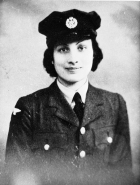Visits
Visits to historical sites, museums, and galleries offer exciting opportunities to engage with the past. Hands on experiences give an insight into the world beyond the classroom. This section enables you to have the confidence to plan and undertake visits which effectively develop children’s learning.
-

The British Museum: Creative ICT for Kids
ArticleClick to view -

Case Study 6: Bristol Blitz - Writing in an interactive environment
ArticleClick to view -

Using sites and the environment
ArticleClick to view -

Exploring chronology in a museum
ArticleClick to view -

Saltaire: Planning for an effective learning experience on a living site
ArticleClick to view -

Throw away the worksheets!
ArticleClick to view -

Cross Curricular Project on a famous person
ArticleClick to view -

Bringing the past to life!
ArticleClick to view -

Children's thinking in archaeology
ArticleClick to view -

Teaching about the translatlantic slave trade and emancipation
ArticleClick to view -

Discovery Visits: What's New at English Heritage for Schools?
ArticleClick to view -

Piecing together the puzzle: Some thoughts on historical sites
ArticleClick to view -

Using a Local Museum, Fulham Palace, the Hidden Jewel of West London
ArticleClick to view -

In the Footsteps of our Ancestors: Beamish - a unique educational experience
ArticleClick to view -

Cabinets of Curiosities, The History of Museums
ArticleClick to view -

'Hands On' Archaeology, A Case Study: Visiting the Archaeological Resource Centre (ARC) in York
ArticleClick to view -

A visit to the Red Lodge, Bristol: using ICT to record and communicate children's learning in history
ArticleClick to view -

Can you bring the dead back to life...?
ArticleClick to view -

Beyond the classroom walls: museums and primary history
ArticleClick to view

